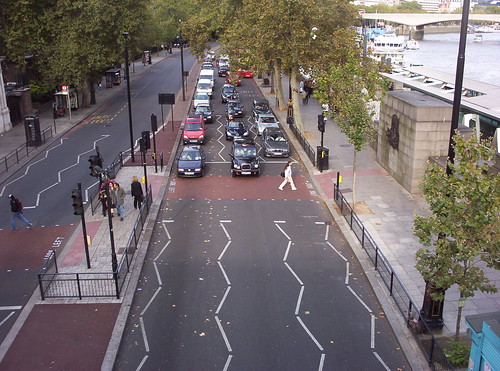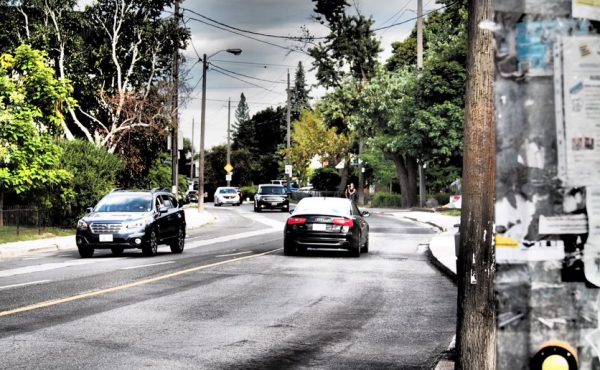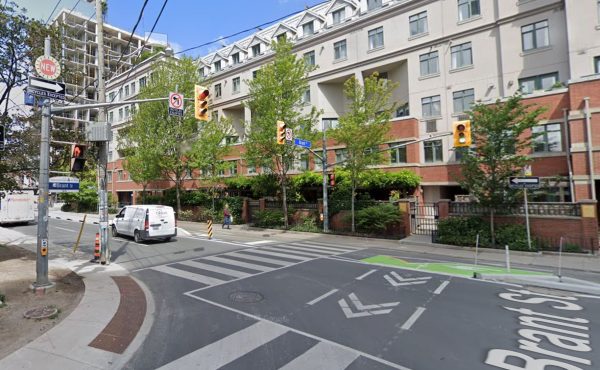
Pedestrian cross in Kensington, London, England.
– – – – – – – –
As Toronto begins to work on creating a pedestrian plan, one example it can look to is London, England, which commissioned a remarkable pedestrian plan published in 2004 called “Towards a fine city for people“, developed under the direction of the Danish urbanist Jan Gehl. The plan is part of the Mayor of London’s vision “for London to become one of the world’s most walking-friendly cities by 2015.”
London has engaged in some signature pedestrian initiatives in recent years, such as closing off a major road on one side of Trafalgar Square, and building some wonderful pedestrian bridges over the Thames. But this report goes into the kind of detailed, street-level work that needs to be done to make the city walking-friendly throughout.
One of the things I noticed walking around central London was the prevalence of barriers intended to make sure pedestrians don’t cross at certain places. The Times reports on an interesting recent initiative:
In Kensington High Street, almost 600 metres of railings have been removed to allow pedestrians to cross where they want. The results have discredited the belief that railings prevent accidents: in the two years after they were removed, pedestrian casualties declined three times faster than the London average. Traffic engineers believe that drivers are now keeping a sharper eye out for pedestrians because they know that they may cross at any point.
According to the story, Britain’s Conservative Party is now advocating the removal of not only barriers, but also signals, lines and signs from many locations in order to make pedestrians and drivers equal in status and create slower, more careful traffic:
The Conservatives are planning to publish a “green paper†on roads this year which will borrow heavily from so-called shared-space schemes in the Netherlands, where pedestrians, cyclists and cars are encouraged to mingle. Kerbs in several Dutch towns have been removed and the boundaries between the pavement and road blurred deliberately to prevent people from assuming they have right of way.
Recent Ward 20 city councillor candidate Chris Ouellete has also alerted me to a plan in the English city of Brighton that follows a similar philosophy.
It’s an interesting theory, which I’ve seen discussed many times, but I myself am still not entirely convinced about how widely it can be applied in the radical form being advocated by the British Conservatives. It works in specific circumstances — in dense residential areas, or when roads are already narrow, traffic is already pretty congested and slow (or is very light), and pedestrian traffic is already heavy. But I don’t know if these ideas would work in their most radical form in more typical circumstances, even in England.
photo by Hakan Dalstrom




3 comments
I nearly got killed by those railings once.
The opening to get to the island was too narrow. This darn grandma was clogging up the route and the crowd couldn’t move in. I got marooned out in the lanes, left to dodge the double deckers.
I had to press against the railings, breath in and hold.
You’ve misidentified this location in the photo caption: it’s in fact outside Embankment station, not Kensington. That’s Waterloo Bridge in the background.
Cheers,
John
London UK 2004-
Toronto 1981-2004
I would not identify London as a place Toronto should even be considering taking tips on pedestrian inititatives from. London is probably the most pedestrian-hostile large city in Europe. Try to cross Fleet Street or Picadilly anytime between 8AM and 12AM and you’ll see what I mean.